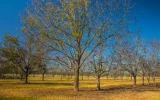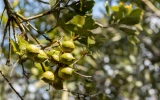35 Most Common Nut Trees Types (with Pictures to Identify)
Most household farms plant fruit trees for a year-round supply of nutritious crops to market or consume. But there are other types of trees, aside from fruit trees, that are edible and profitable at the same time, such as nut trees. In this article, we’ll help you identify 35 of the most common nut trees, so you can select the best option for your farm.
The most common nut tree types include pecan, hazelnut, almond, chestnut, cashew, pistachio, hickory, macadamia, pine nut, black walnut, English walnut, Brazil nut, butternut, oak nut (acorn), Pili nut, beech, and Ginkgo nut tree. Each of them has unique characteristics and features that can help you identify them among others.
Aside from being delicious additions to your meal, the nuts of these trees offer great health benefits and can be a rich source of many vitamins and minerals. Let's dive into more details about the characteristics, growing conditions, and benefits of these nut trees.
Summary
- The most common nut tree types also include the Japanese Walnut, American and Turkish Hazelnut, American, European, Chinese, and Japanese Chestnut, Korean, Italian, Colorado, and Mexican Pine, and more.
- Depending on your climate and garden space, there are a wide variety of nut trees available to suit your needs. From the popular walnut and pecan trees to the more exotic macadamia and pistachio varieties, there's a nut tree perfect for your garden.
- These nut trees have varying health benefits. For example, Ginkgo biloba nuts are known to cure respiratory diseases and are even believed to aid in memory loss. Cashew nuts, on the other hand, are known to improve heart health, reduce inflammation, and promote healthy bones.
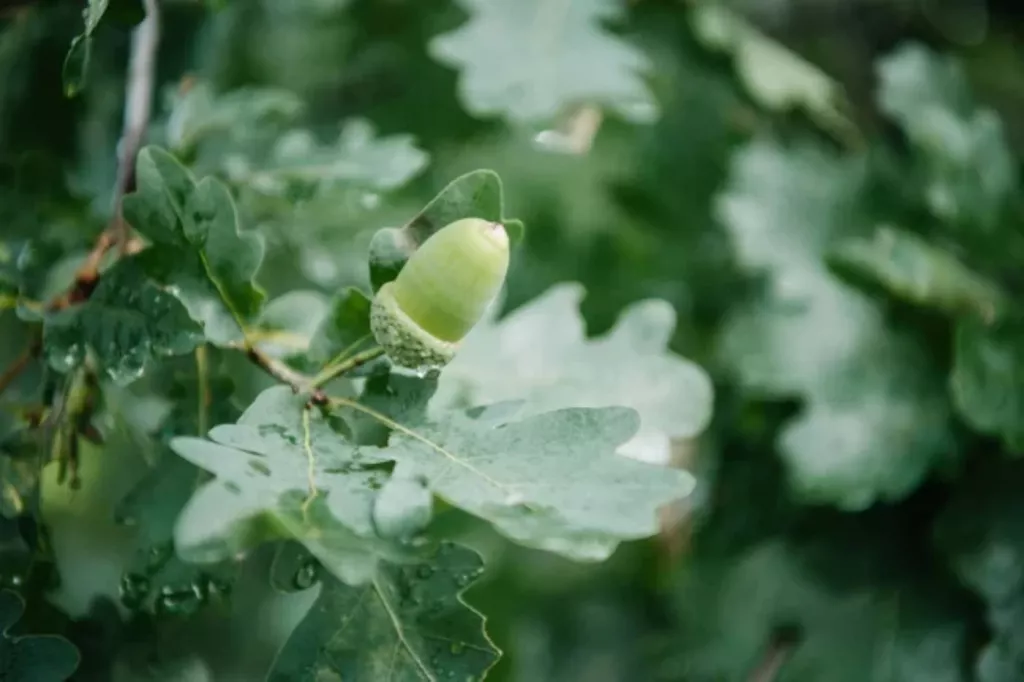
On this page:
35 Most Common Types of Nut Trees
| 35 Most Common Nut Trees | ||||
|---|---|---|---|---|
| Pecan tree | Pine nut tree | Gingko biloba | American beech | Karuka |
| Hazelnut tree | Black walnut tree | Oak tree (Acorn) | Shagbark hickory | African walnut |
| Almond tree | English walnut tree | Hickory nut tree | White oak | Chilean hazelnut |
| Chestnut tree | Brazil nut tree | Japanese walnut | Kola nut tree | Queensland nut |
| Cashew nut tree | Butternut tree | American hazelnut | Mongongo tree | Yellowhorn |
| Pistachio nut tree | Pili nut tree | American chestnut | Sapucaia nut tree | Argan tree |
| Macadamia nut tree | Beech tree | Korean pine | Candlenut tree | Chestnut-leaved oak |
1. Pecans are fast-growing nut trees
Pecans (Carya illinoinensis) are native to the United States and thrive in a variety of soil types, including wet soil. They require plenty of water and a significant amount of space to grow.
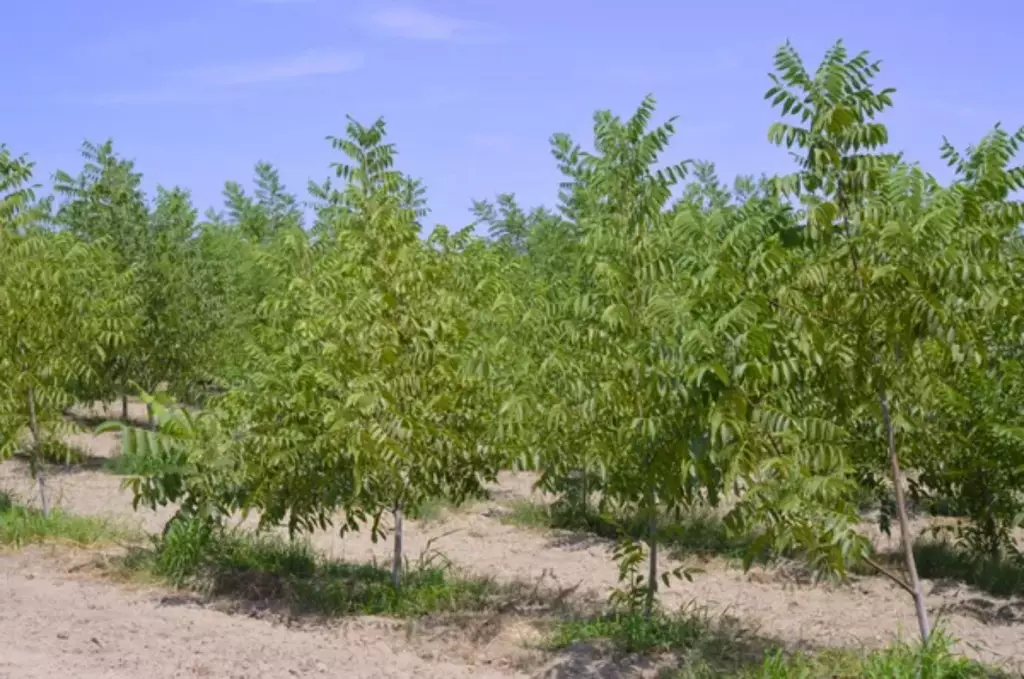
These nut trees are fast growers, gaining at least 2 - 4 feet in height per year from when they are young. Pecan nuts are rich in vitamins and healthy fats, which make them a valuable addition to your garden.
2. Hazelnuts are prolific nut producers
Hazelnuts (Corylus avellana) are also known as filberts, and they are grown in many parts of the world, including Europe, Asia, and North America. They are used in a variety of culinary applications, including baking, confectionery, and as a snack.
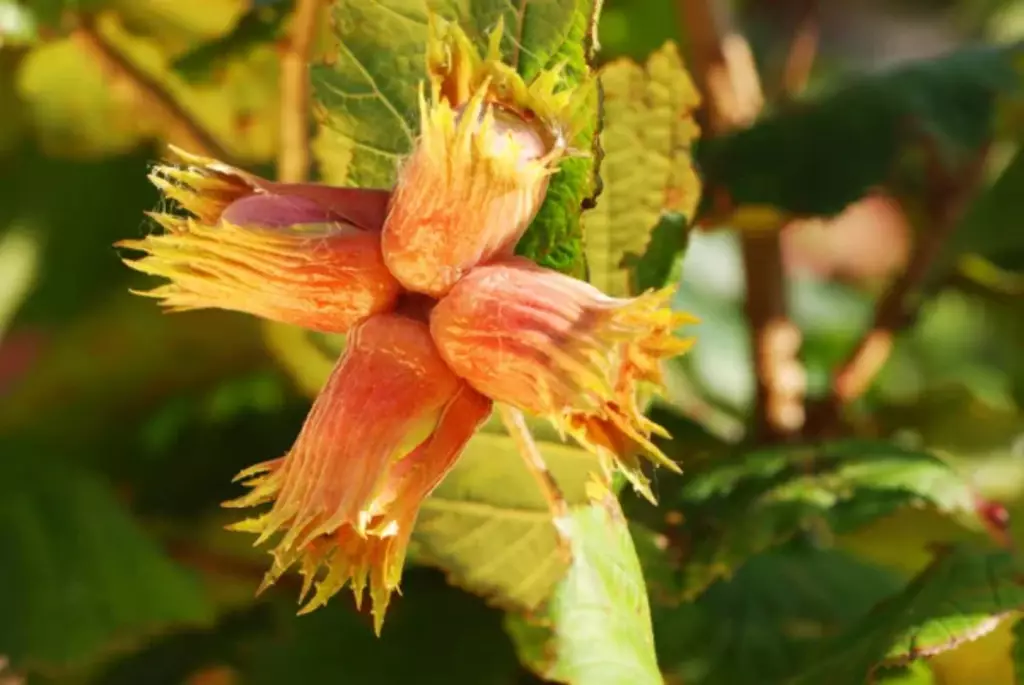
Hazelnut trees are resilient and can grow in different soil conditions. Their nuts are also a good source of protein, fiber, and healthy fats. They are prone to Eastern Filbert Blight, but resistant varieties do exist.
3. Almonds are versatile nut trees
Almond trees (Prunus dulcis) are one of the first trees to blossom in the spring, producing beautiful pink and white flowers. Most almond varieties are self-pollinating, which means they do not require cross-pollination with another tree to produce nuts. These trees are well-adapted to dry climates and can tolerate drought conditions, which makes them easy to manage.
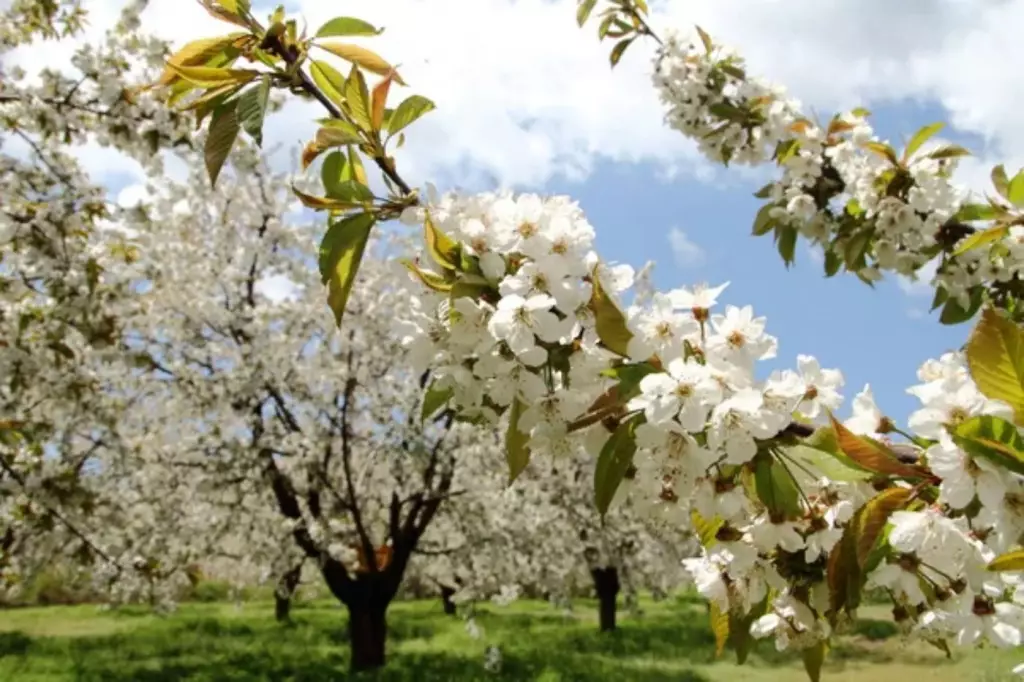
The nuts of these trees are used in a variety of culinary applications, but their trademark is that they can be processed into products such as almond milk and almond butter. These nuts are also known for their nutritional content, containing vitamin E and healthy fats.
4. Chestnut trees are long-lived trees
Chestnut trees (Castanea spp.) can live for several hundred years, with some specimens reaching over 1,000 years old. They can grow up to 100 feet tall and have a broad, spreading canopy. Their wood is a good source of lumber, which is also high in tannin and has been used for centuries in the tanning of leather.
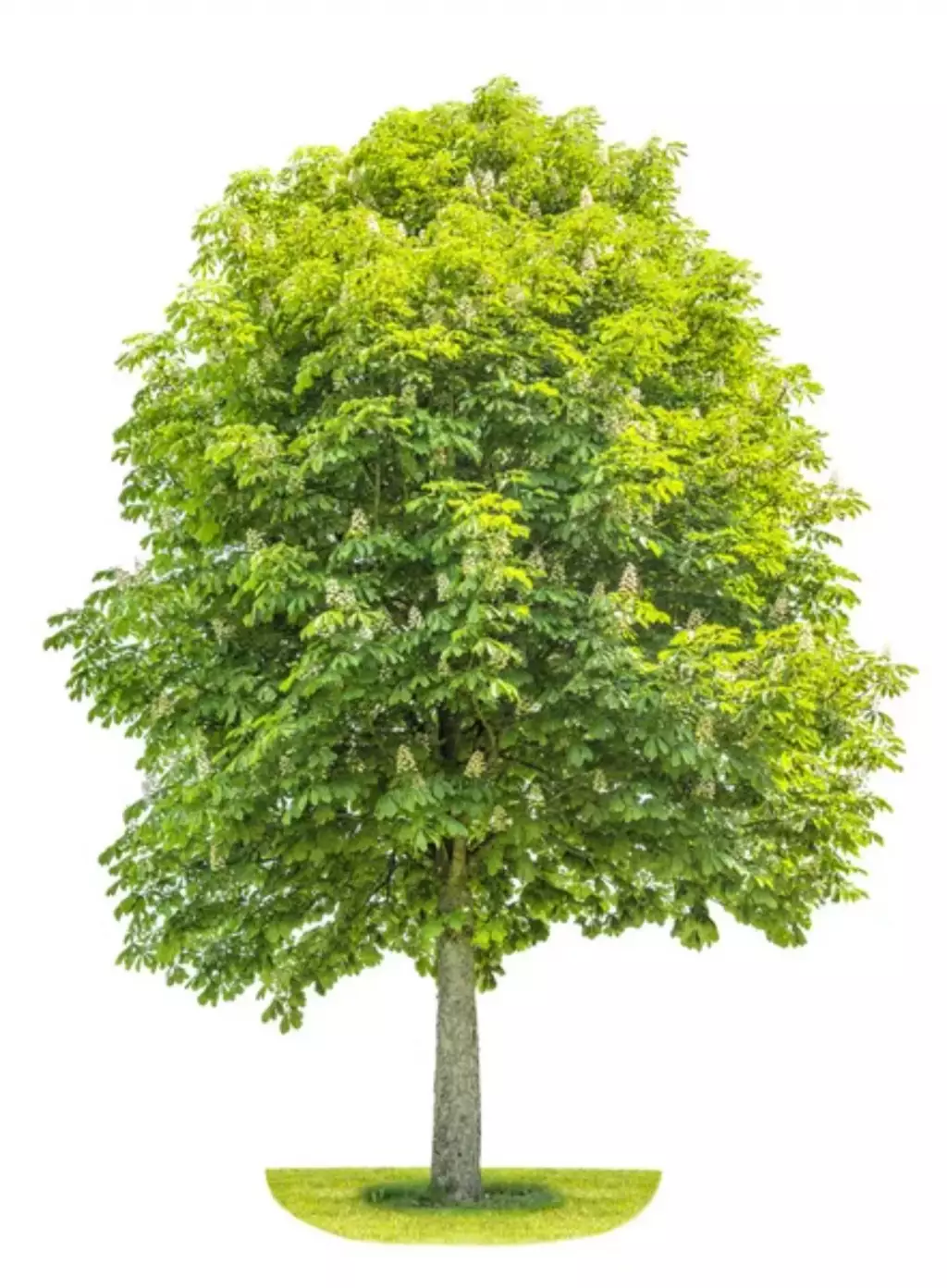
They produce edible nuts, which are a popular food crop used in a variety of culinary applications, including roasting, baking, and as a flour substitute.
If you have a bee apiary, you may want to consider planting chestnut trees to produce amber-colored honey which has natural antimicrobial properties, and a low glycemic index, which makes it good for diabetes patients.
5. Cashews produce both nuts and fruits
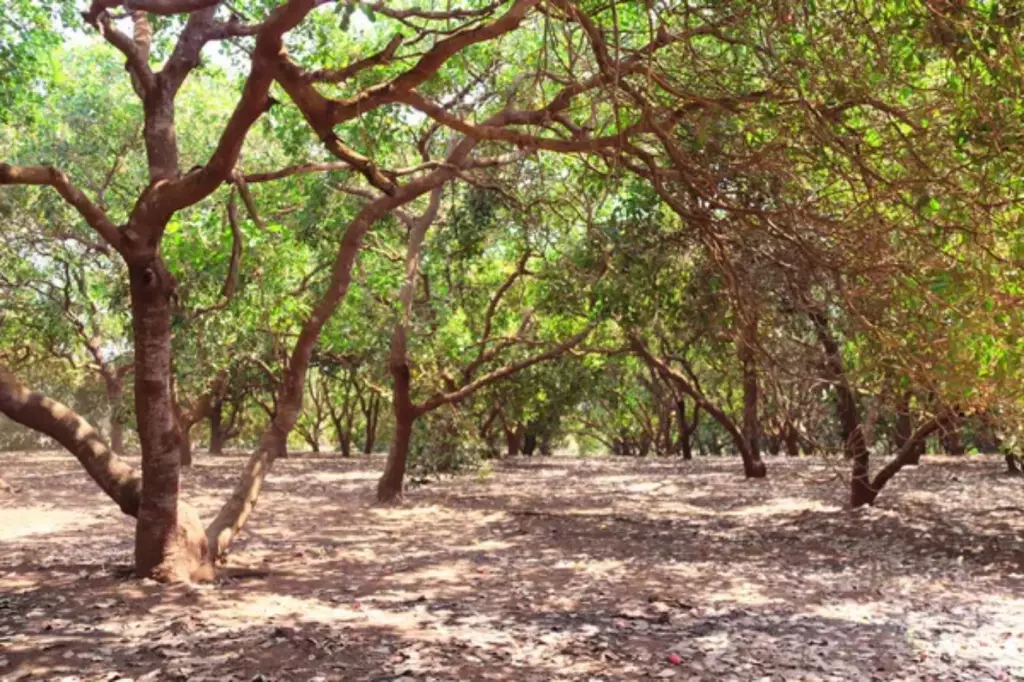
Cashews (Anacardium occidentale) are tropical nut trees that grow well in warm climates. They produce both a nut and a fruit, with the nut being the more commonly consumed of the two. The cashew nut is surrounded by a shell that contains a toxic substance called urushiol, which can cause skin irritation and other allergic reactions, so you may need to roast or steam them before consuming them.
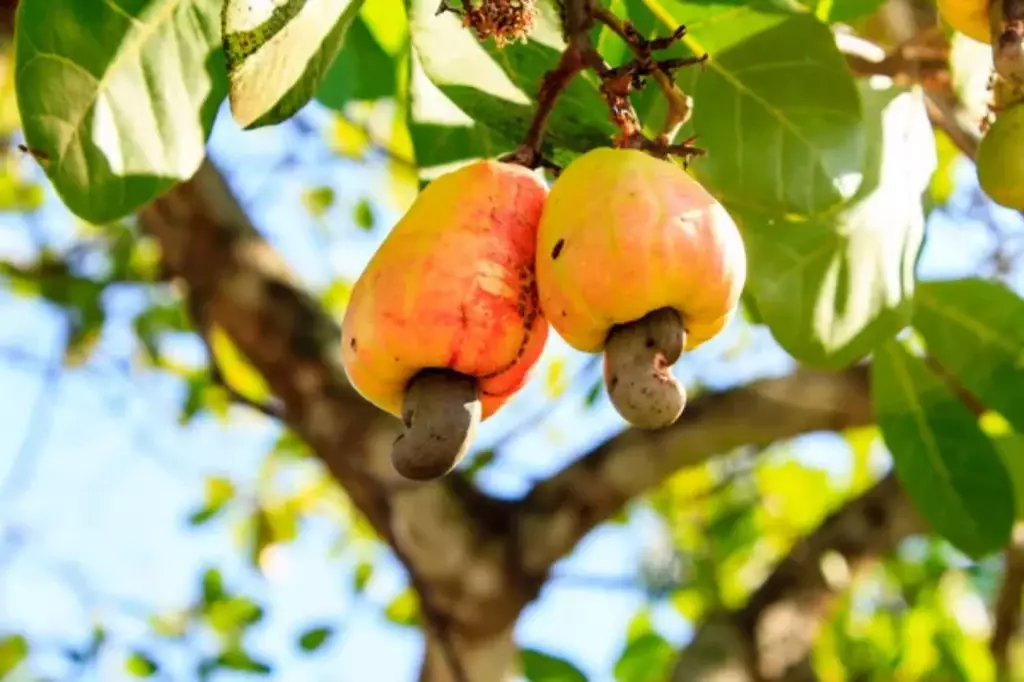
Cashew nuts have various culinary applications and can also be processed into cashew butter, cashew milk, and other products. The nuts of these trees are believed to have several health benefits, including improving heart health, reducing inflammation, and promoting healthy bones.
6. Pistachios are popular nut trees
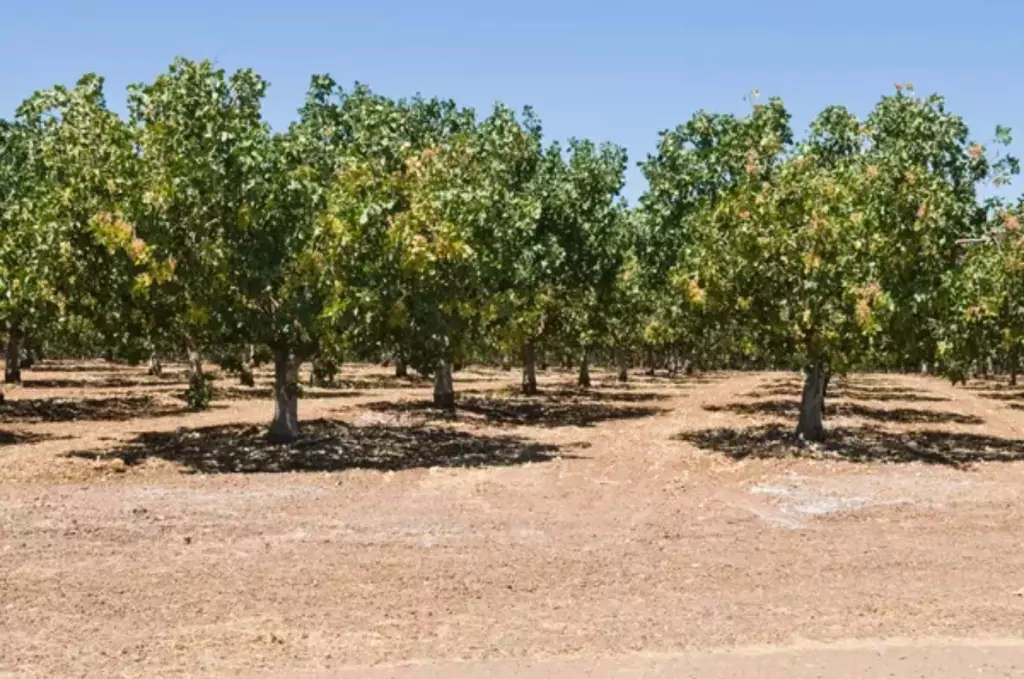
Pistachios (Pistacia vera) are known for their unique green-colored nuts, which are a rich source of protein, fiber, healthy fats, and many vitamins and minerals, making them a popular health food.
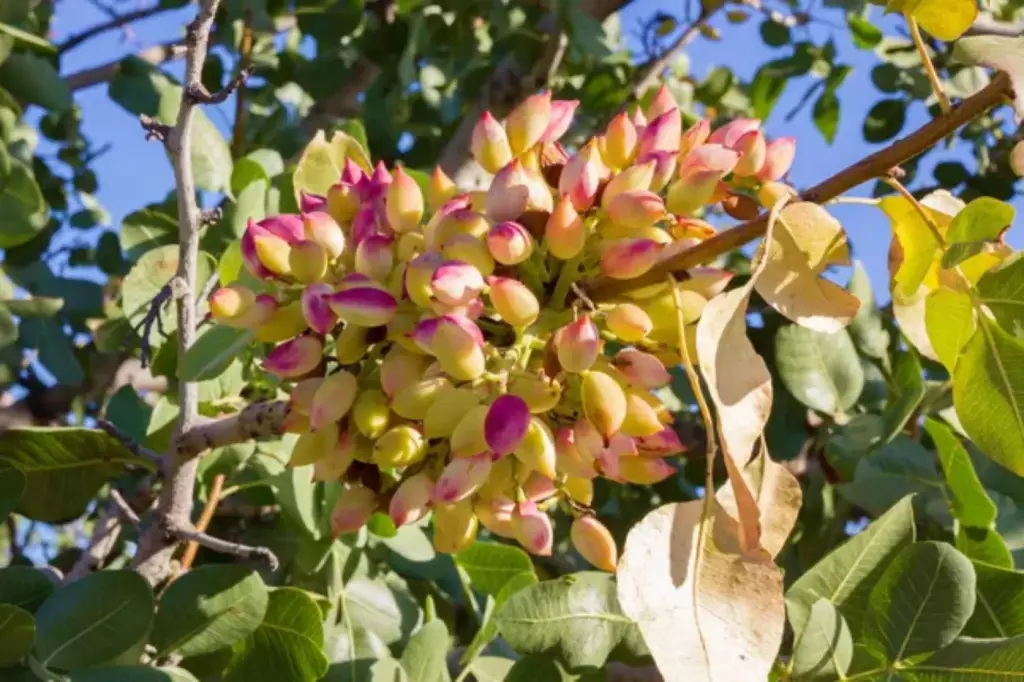
Pistachio trees are dioecious, which means that there are separate male and female trees, and both are required for pollination and nut production. They are well-adapted to dry climates and can live for several decades, with some species reaching over 100 years old.
7. Hickories are majestic growers
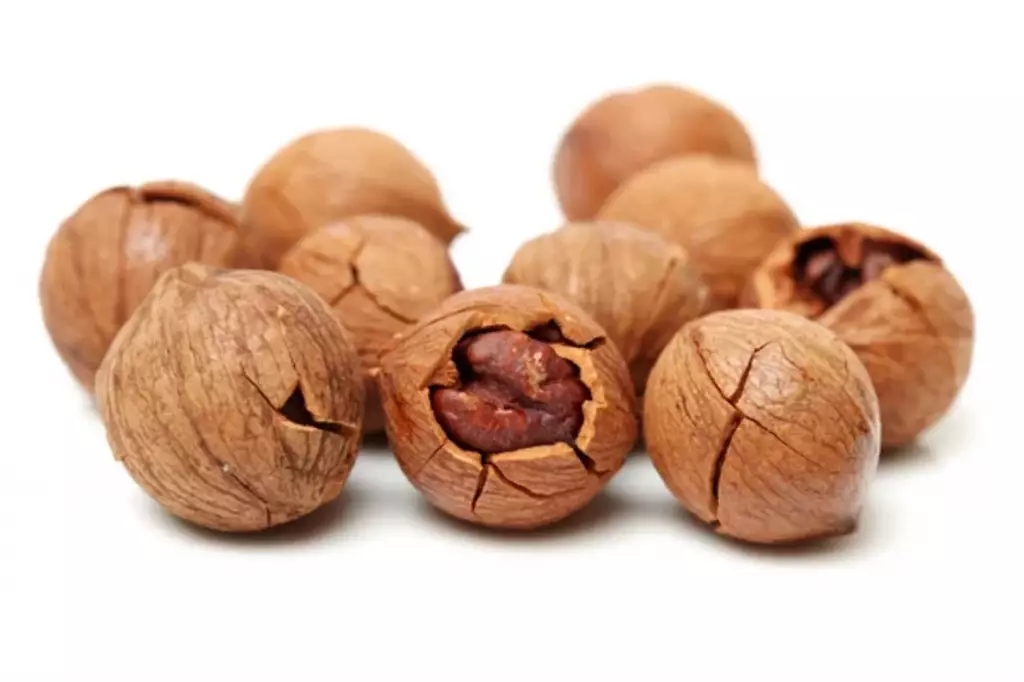
Hickory trees (Carya spp.) take about 10 - 15 years before they can bear nuts, but they can live for centuries. The nuts they produce are small and sweet, with extremely sturdy shells. These majestic trees grow up to 60 feet tall and require ample space to develop.
They have beautiful fall foliage and are considered an important part of many forest ecosystems because they provide food and habitat for a variety of wildlife species, including squirrels and birds.
8. Macadamia nut trees are profitable nut trees
Macadamia trees (Macadamia spp.) produce nuts that can fetch premium prices in the market. These nuts have a very hard shell that requires a special tool to crack open. Macadamia nuts are high in healthy fats, with a high percentage of monounsaturated fatty acids.
The Macadamia integrifolia
It's native to eastern Australia where it is the best known commercial variety of macadamia nut. It tolerates tropical and subtropical climates, producing nuts enclosed in a thin hard shell containing a rich, oily nut. The nuts are commonly used in baked goods and desserts.
The Macadamia tetraphylla
It's native to southeast Queensland, Australia where it is hardier than M. integrifolia and tolerates frost. It produces smaller nuts than the other variety and is used similarly.
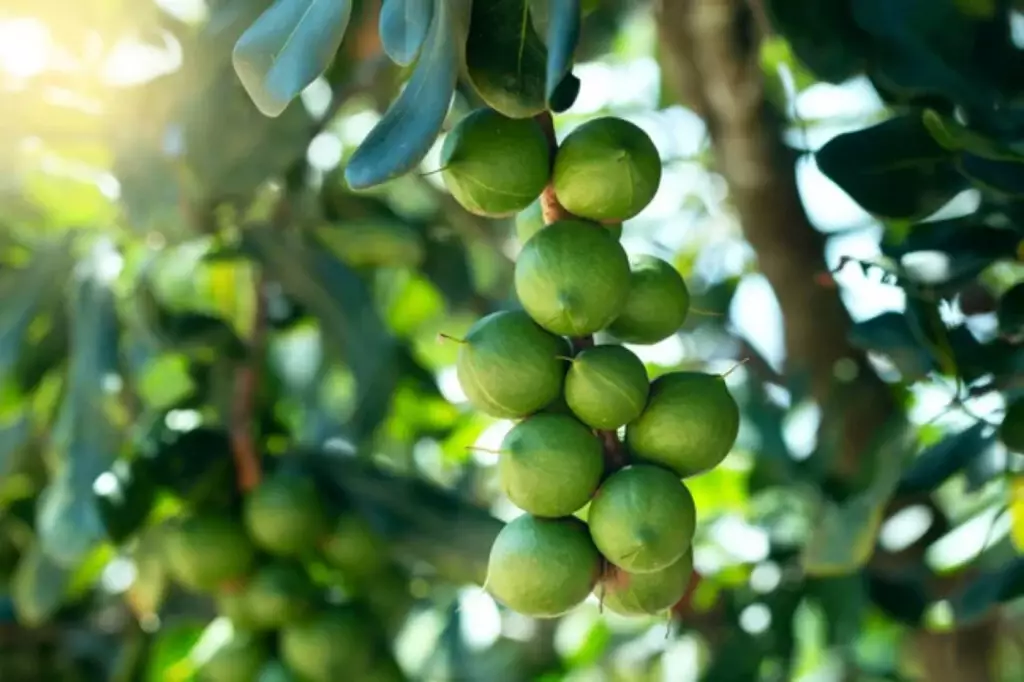
However, the trees are slow-growing and can take several years to produce nuts. Either way, if you want to add ornaments to your orchard or farm, you can plant macadamia trees for their attractive foliage in addition to their nuts.
9. Pine nut trees are produced from specific pine trees
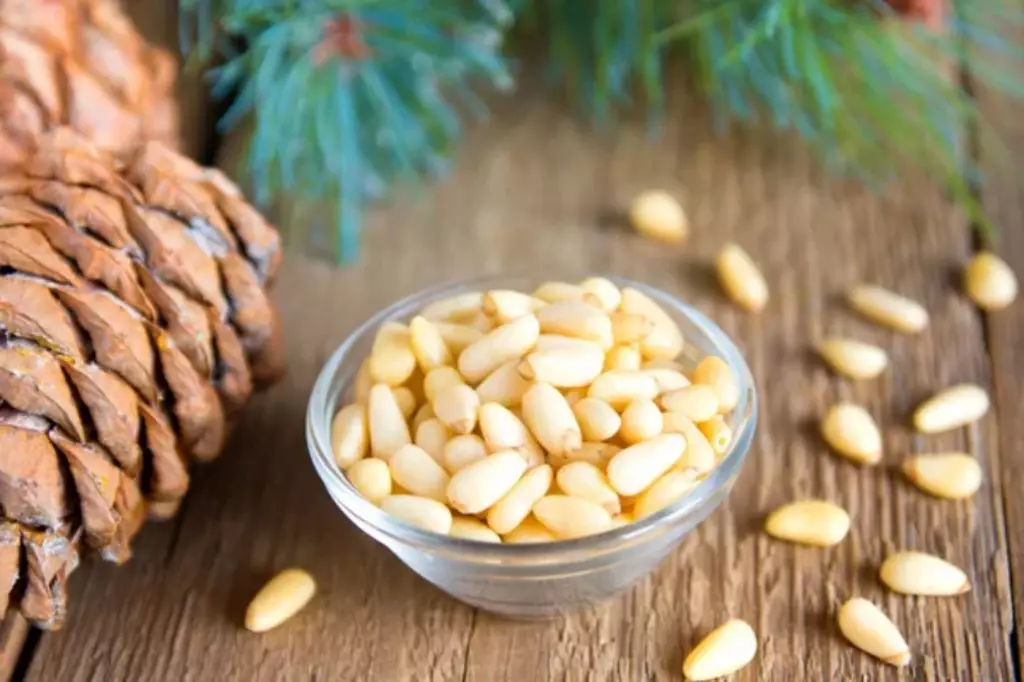
Pine nut trees (Pinus spp.) have long, thin needles that grow in clusters of two to five. These trees produce large, woody cones that can be up to 10 inches long.
The bark of a pine nut tree is usually gray or brown and has a scaly texture. As the tree ages, the bark may become rough and deeply furrowed. Pine nut trees can grow quite large, with some species reaching heights of 100 feet or more. However, there are also smaller varieties that are well-suited to home gardens.
10. Black walnut trees produce edible and nutritious nuts
Black walnut trees (Juglans nigra) are native to the United States and are often grown for their high-quality wood used in making furniture. These trees produce a strong-tasting nut, providing a unique flavor compared to other walnut varieties.

It takes 7 years before they can produce their first nut crop, but full maturation is expected only until 25 years of age. If you opt to plant these nut-bearing trees, perhaps consider planting them solely, as they can inhibit the growth of other plants if grown together.
11. English walnuts are well-known nut-bearing trees
English walnut trees (Juglans regia) are easy to identify by their long, narrow leaves, smooth gray bark, and large, oval-shaped nuts with a hard outer shells. The nuts are highly valued for their nutritional content and delicious flavor and are used in a variety of culinary applications, including baking, cooking, and snacking.
12. Brazil nut trees produce nuts that have high selenium content
Brazil nut trees (Bertholletia excelsa) are native to South America and produce large, edible nuts rich in selenium. They can grow up to 50 meters (165 feet) tall and have a broad, spreading canopy that can reach up to 30 meters (100 feet) in diameter, providing shade for other plants and animals.
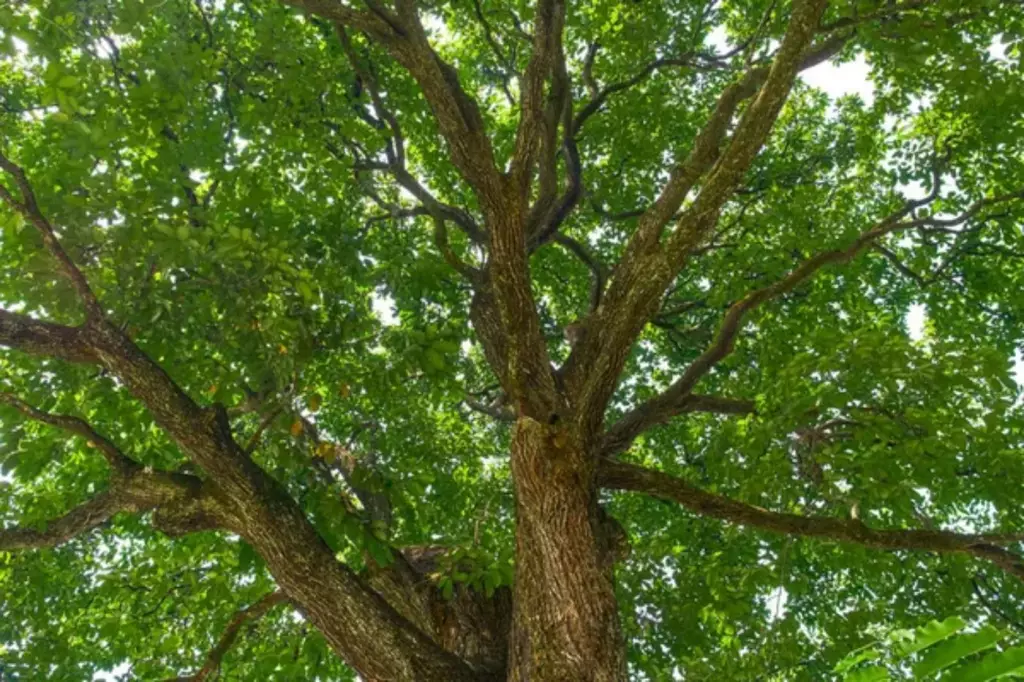
The fruit of the Brazil nut tree is a large, woody capsule weighing about 4- 5 pounds that store 10 to 25 individual Brazil nuts, which are a valuable food source for humans and animals.
These nuts are highly nutritious and are a good source of protein, healthy fats, and several important minerals, including selenium, magnesium, and zinc. They are also rich in antioxidants, which can help protect the body against damage from free radicals.
Their rich, creamy flavor and crunchy texture make them good as a topping for salads, oatmeal, and yogurt, or as an ingredient in desserts like cookies and cakes.
13. Butternut trees are cold-tolerant nut trees
Butternut trees (Juglans cinerea), also known as white walnut trees, are cold-hardy nut trees native to North America. They can grow quite large, so you may want to consider giving them ample space in your garden when planting.
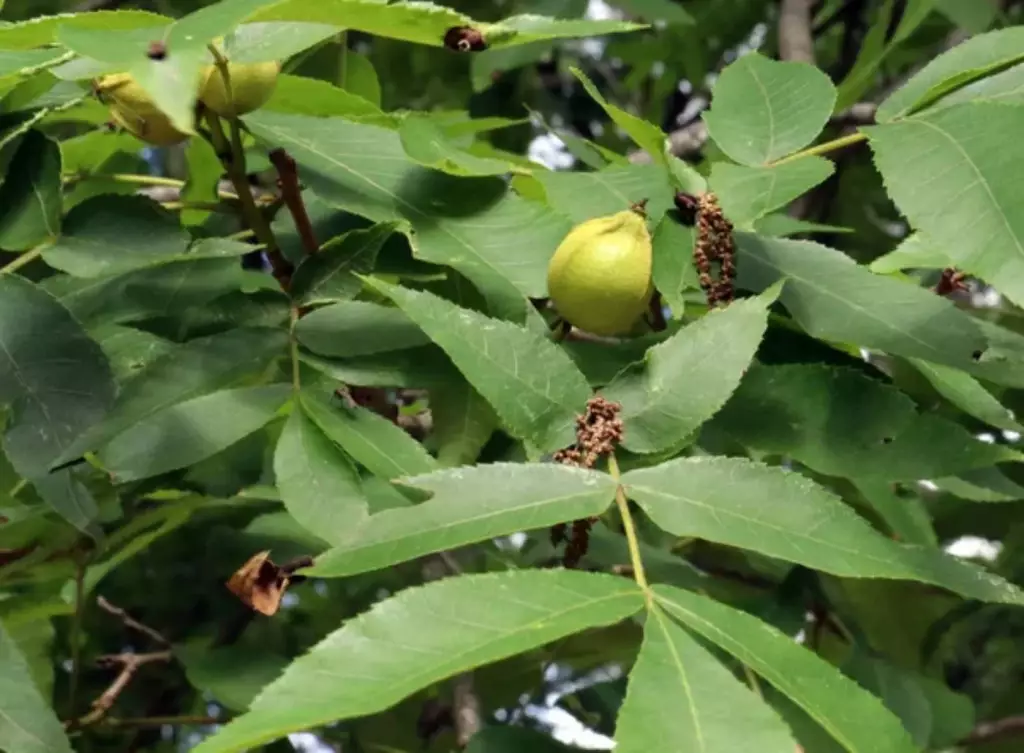
These trees are unique and attractive and are easily identified by their distinctive bark, compound leaves, and oblong nuts. While the species is currently facing threats from a fungal disease called butternut canker, efforts are underway to conserve and protect these trees for future generations.
14. Oak trees produce acorns
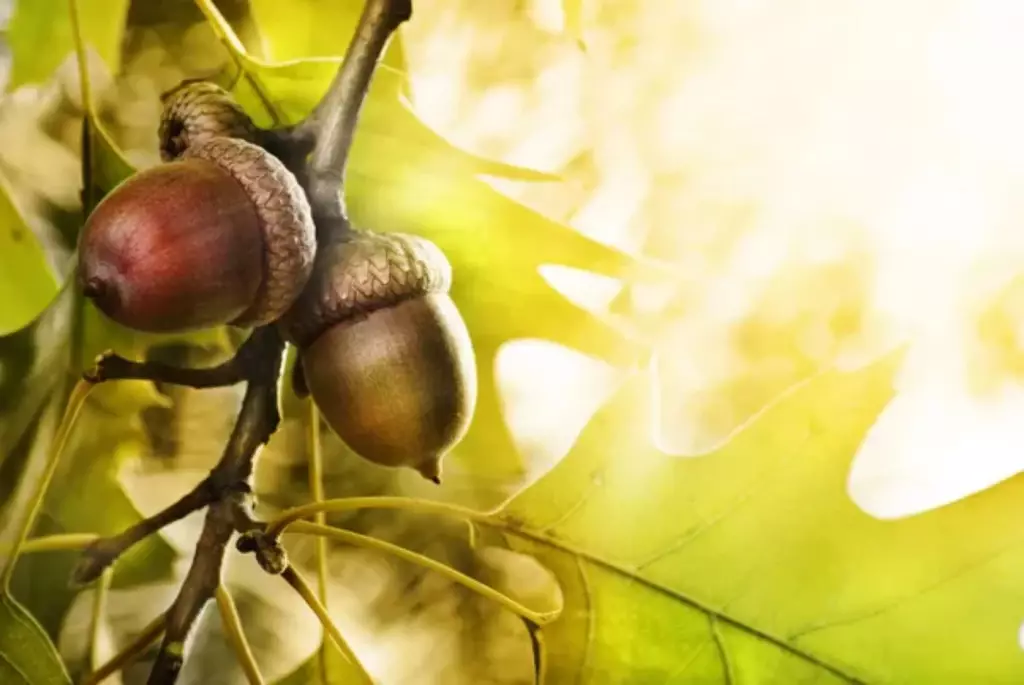
Although more valued for lumber production, oak trees (Quercus spp.) also produce nuts, and these nuts are called acorns. Acorns are a staple food source for various wildlife species. While not typically consumed by humans, they can be transformed into nutritious flour and meal options.
15. Pili nut trees produce highly favored nuts
Pili nut trees (Canarium ovatum) can grow up to 20 meters tall and produce large, ovoid drupe fruits that are about 4–7 cm long. The fruit has a hard, woody shell that encloses the edible kernel or nut.
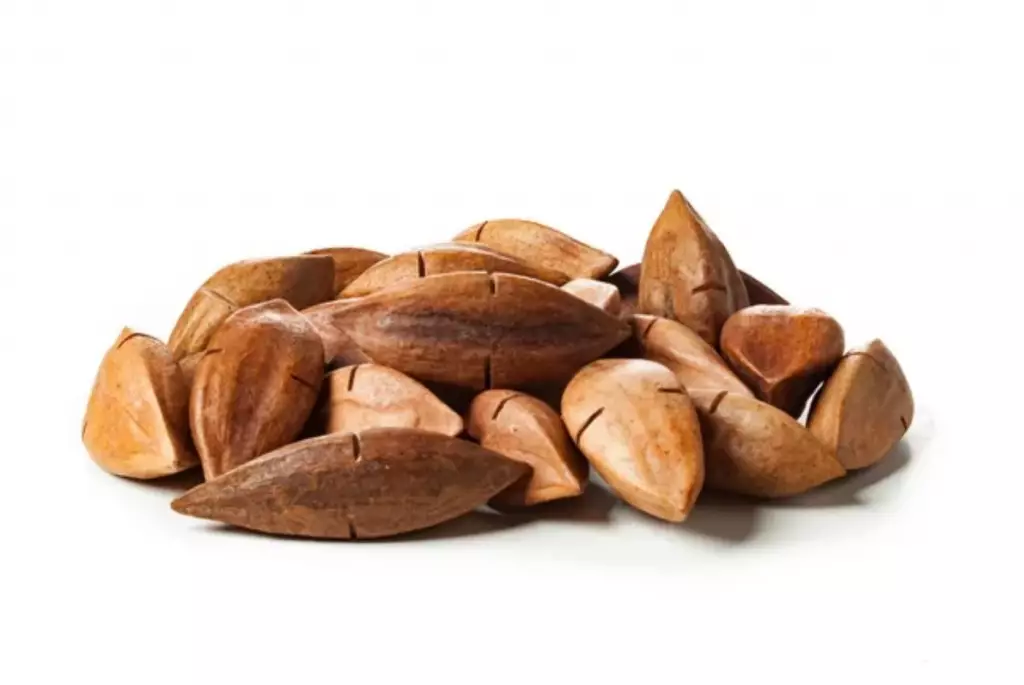
The pili nut itself is elongated, pointed at one end, and has brown, papery skin. The nut is rich in oil and has a sweet, buttery flavor.
16. Beech trees produce edible nuts
Beech trees (Fagus spp.) are slow-growing and can live for several hundred years. They typically have a tall, straight trunk with a rounded crown of branches at the top.
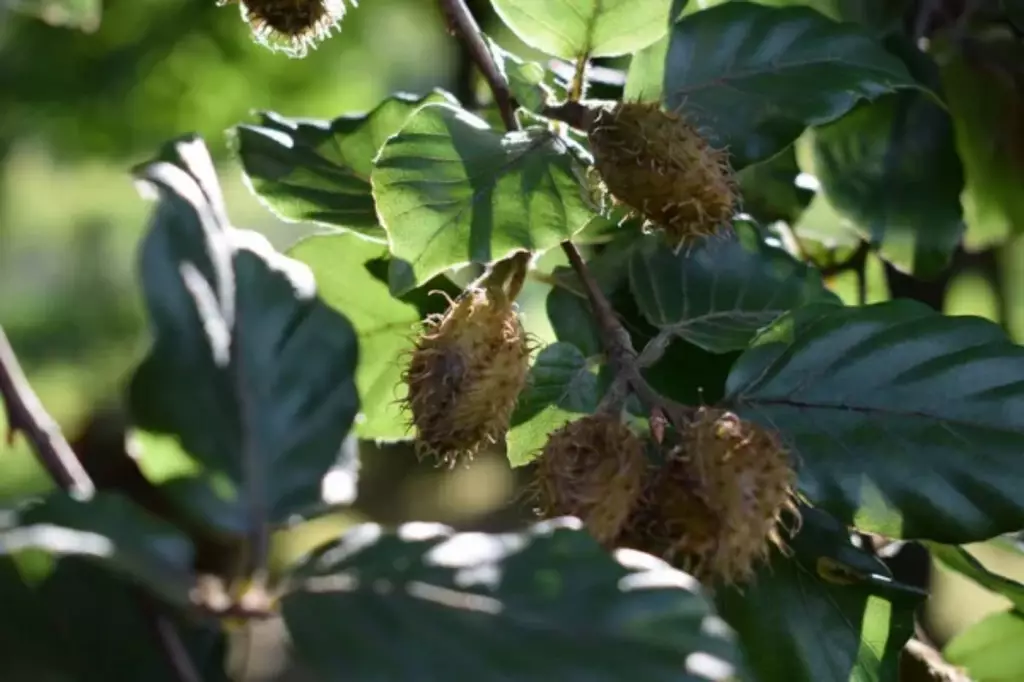
The bark of a beech tree is smooth and gray, with a unique texture that resembles elephant skin. Their flowers are small and inconspicuous and are usually not noticeable.
They produce a prickly burr fruit that contains two or three triangular nuts. The nuts are about 1 inch long and have a hard, woody shell.
17. Ginkgo biloba is a resilient type of nut tree
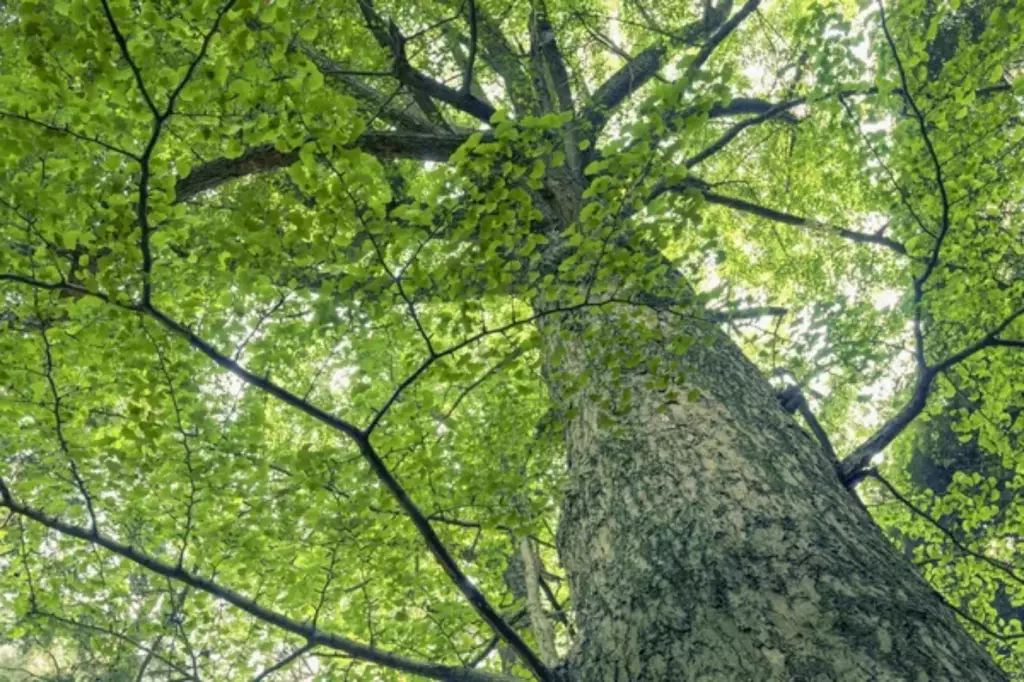
Ginkgo nut trees are known for their resilience and ability to withstand harsh environmental conditions, including pollution and drought. They are often planted in urban areas as hardy and attractive ornamental trees.
These trees can grow up to 30 meters (100 feet) tall and 9 meters (30 feet) wide, and produce small, yellowish-brown nuts that are enclosed in fleshy, plum-like fruit. The fruit has a strong, unpleasant odor that is often compared to the smell of rancid butter or vomit.

Ginkgo nuts are highly valued in traditional Chinese medicine for their medicinal properties. They are believed to cure cough, fever, diarrhea, and even gonorrhea.
18. The Japanese walnut is native to eastern Asia
The Japanese Walnut (Juglans ailantifolia) tolerates colder climates than English walnut and produces smaller nuts with a rich flavor. The Japanese Walnut needs well-drained soil and full sun.
19. The common hazelnut tolerates a variety of soils
The Common Hazelnut (Corylus avellana) is native to Europe and Asia. It tolerates a variety of soils and climates, producing high yields of oval nuts. The nuts are nutritious and can be eaten raw or used in baking.
The American hazelnut produces small nuts
The American hazelnut (Corylus americana) is native to eastern North America where it is more cold hardy than the European hazelnut. It produces smaller nuts than the European variety and was used by Native Americans as a food source.
The Turkish Hazelnut (Corylus colurna)
It's native to southeast Europe and southwest Asia. It is very hardy and tolerates hot and dry conditions, producing nuts that are larger than the common hazelnut. It is commercially grown in Turkey for nut production.
20. The American chestnut is now nearly extinct
The American chestnut (Castanea dentata) once dominated eastern US forests but is now nearly extinct due to chestnut blight fungus. It produced very large, sweet nuts. Efforts are underway to restore the species.
The European Chestnut (Castanea sativa)
It's native to southern Europe and Asia Minor, where it is widely cultivated for its edible nuts. It tolerates a variety of soils and climates, and its nuts have a higher starch content than American chestnuts.
The Chinese Chestnut (Castanea mollissima)
It's native to central and northern China. It is commercially the most important chestnut species because blights that killed American and European chestnuts do not affect it as severely. It produces large nuts used in cuisine worldwide.
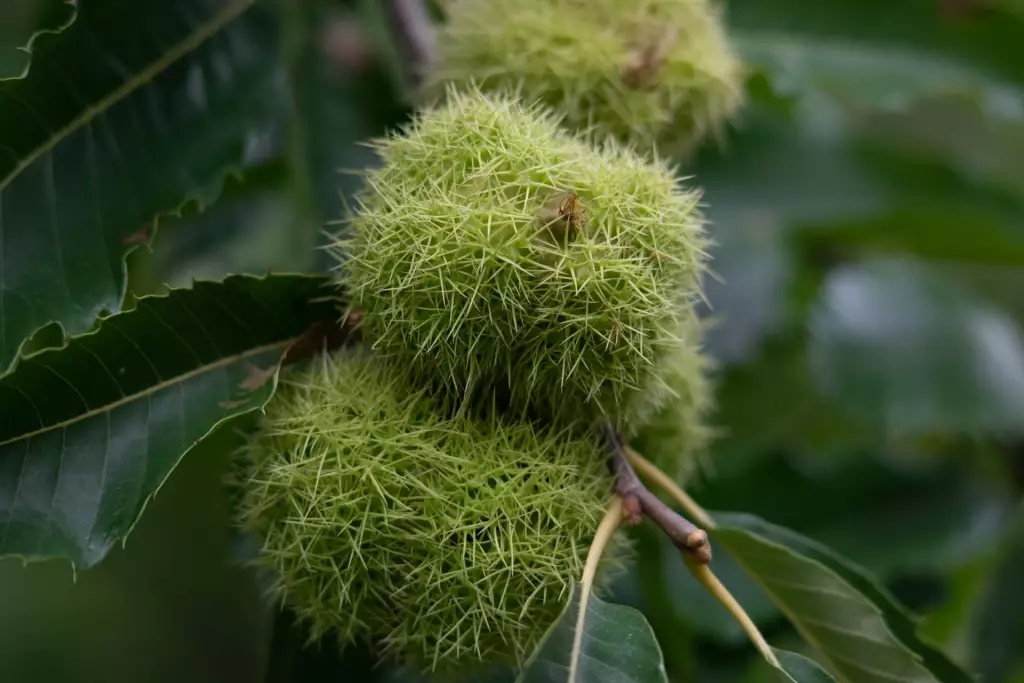
The Japanese Chestnut (Castanea crenata)
It's native to Japan where it is more cold hardy and blight resistant than other species. It is grown commercially and used in traditional Japanese cuisine, producing nuts similar to European chestnuts.
21. The Korean pine tolerates temperatures to -40°F
The Korean Pine (Pinus koraiensis) is native to Korea and northeast China where it is very cold hardy and tolerates temperatures to -40°F. It produces edible pine nuts with a high oil content that are used in traditional Eastern medicine.
The Italian Stone Pine (Pinus pinea)
It's native to the Mediterranean region where it tolerates hot, dry summers. It produces large pine cones containing edible pine nuts and is commercially cultivated in Europe and Mediterranean countries.
The Colorado Pinyon (Pinus edulis)
It's native to western North America where it is drought tolerant and grows at high elevations, producing small pine nuts eaten by Native Americans and wildlife. It provides food and habitat in arid regions.
The Mexican Pinyon (Pinus cembroides)
It's native to Mexico and the southwest USA where it tolerates heat and drought extremely well. It produces pine nuts similar in size and taste to Colorado pinyon that were traditionally gathered by Native Americans.
22. The American beech grows 90-100ft tall
The American Beech (Fagus grandifolia) is a native hardwood of eastern North America that grows 90-100ft tall, providing food and habitat. Its nuts and leaves are important forest products for humans and wildlife.
The European beech (Fagus sylvatica)
It is native to Europe and Asia Minor, tolerating a variety of climates and soil types. Its nuts are edible, high in fats and protein, and its timber is used for flooring, furniture, and firewood.
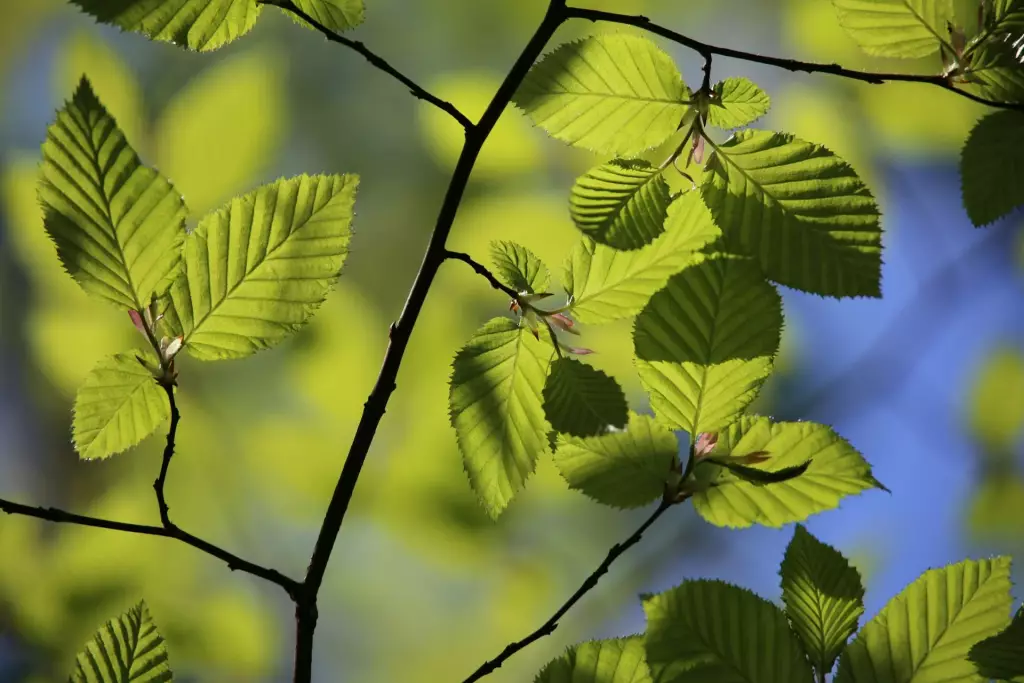
23. The Shagbark hickory's bark peels off in long shreds
The Shagbark Hickory (Carya ovata) is native to eastern and central North America, where its bark peels off in long shreds in a distinctive feature. Its sweet, edible nuts are used in cooking and its timber for floors, tool handles and furniture.
The Shellbark hickory (Carya laciniosa)
It is native to eastern North America where its bark peels off in long, irregular plates or shells. Its edible nuts have a rich, buttery flavor and its timber is used similarly to other hickories.
24. The White Oak grows over 100ft tall
The White Oak (Quercus alba) is native to eastern and central North America where it grows over 100ft tall as a long-lived hardwood. Its acorns were an important food for Native Americans and its durable timber is used for barrels, flooring and furniture.
The Red Oak (Quercus rubra)
It is native to eastern North America where it is a fast growing tree reaching 60-80ft tall. Its acorns were traditionally leached and ground into flour and its timber used similarly to white oak.
25. The Kola Nut Tree grows 60-80ft tall
The Kola Nut Tree (Cola acuminata) is native to tropical West Africa and is the source of kola nuts containing caffeine and kolanin. The nuts are chewed as a stimulant and used in soft drinks. It grows 60-80ft tall in tropical rainforests.
26. The Mongongo tree tolerates drought
The Mongongo Tree (Schinziophyton rautanenii) is endemic to southern Africa where its edible nuts are high in fat and protein and traditionally gathered. It tolerates drought and grows in sandy or rocky soils, providing an important local food and oil source.
27. The Sapucaia nut tree is native to South America
The Sapucaia Nut Tree (Lecythis pisonis) is a tropical tree native to South America that produces large nuts with edible kernels high in fat. The nuts are traditionally gathered and also commercially harvested from trees growing in tropical rainforests of Brazil and Venezuela.
28. The Candlenut tree tolerates a variety of soils
The Candlenut Tree (Aleurites moluccanus) is native to Southeast Asia and Pacific Islands. Its nuts contain high levels of oil used for lighting and fuel, and are also edible and used to flavor curries and condiments. It tolerates a variety of soils and climates.
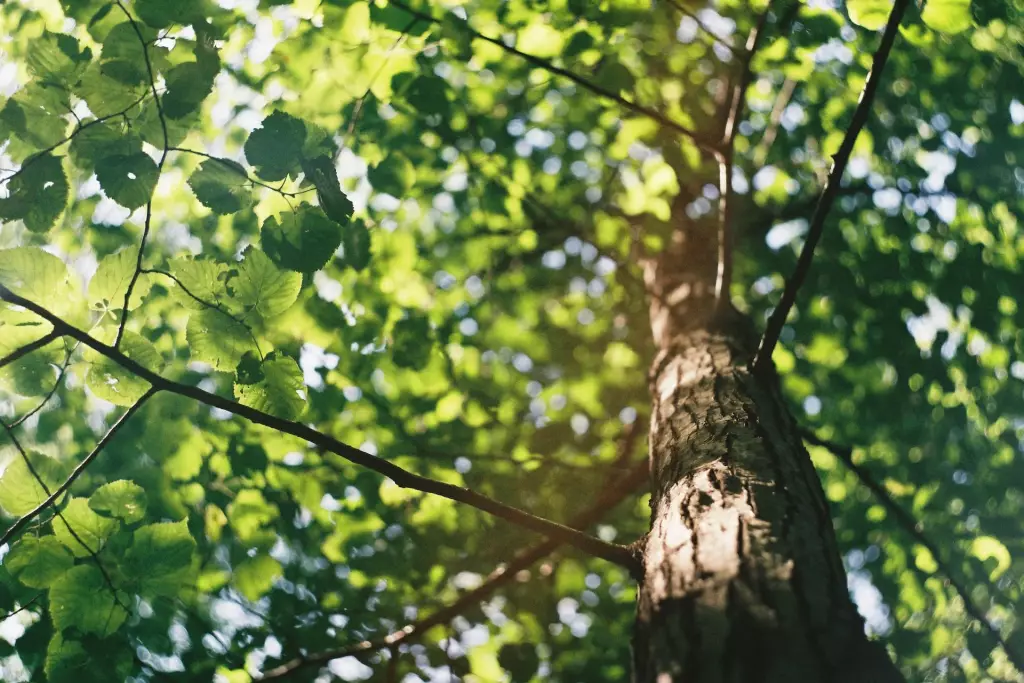
29. The Karuka is endemic to South Pacific islands
The Karuka (Pandanus julianettii) is endemic to Fiji and other South Pacific islands where it produces clusters of small edible nuts high in fat providing an important traditional food source used in cooking. It tolerates coastal and tropical environments.
30. The African walnut grows in tropical rainforests
The African Walnut (Coula edulis) is a tropical tree native to western and central Africa that produces large, nutritious nuts traditionally gathered as an important source of fat and protein in native diets. It grows in tropical rainforests.
31. The Chilean hazelnut tolerates the cold
The Chilean Hazelnut (Gevuina avellana) is endemic to southern Chile and Argentina where it tolerates the cold, producing nuts high in fat and protein. The nuts are traditionally gathered and commercially harvested in Chile, with trees growing 30-40ft tall in temperate regions.
32. The Queensland nut tolerates frost
The Queensland Nut (Macadamia tetraphylla) is native to southeast Queensland, Australia where it is hardier than M. integrifolia and tolerates frost. It produces smaller nuts than the other macadamia variety that are used similarly in cuisine.
33. The Yellowhorn is native to eastern Asia
The Yellowhorn (Xanthoceras sorbifolium) is a deciduous tree native to eastern Asia that tolerates a variety of climates and soils. It produces edible nuts resembling chestnuts that are high in fat. The nuts have traditionally been used in Chinese medicine.
34. The Argan tree is a near-threatened species
The Argan Tree (Argania spinosa) is endemic to Morocco where it is a near-threatened species. It produces small, spiny fruit containing edible kernels that are a source of argan oil used in cuisine and cosmetics. The argan tree tolerates drought and grows in arid environments.
35. The Chestnut-leaved oak thrives in Mediterranean climates
The Chestnut-leaved Oak (Quercus castaneifolia) is an evergreen oak native to eastern Asia and the Himalayas. It produces acorns similar to other oak species that are edible when leached. The chestnut-leaved oak tolerates cold and thrives in Mediterranean climates. It provides important habitat and food for wildlife.

